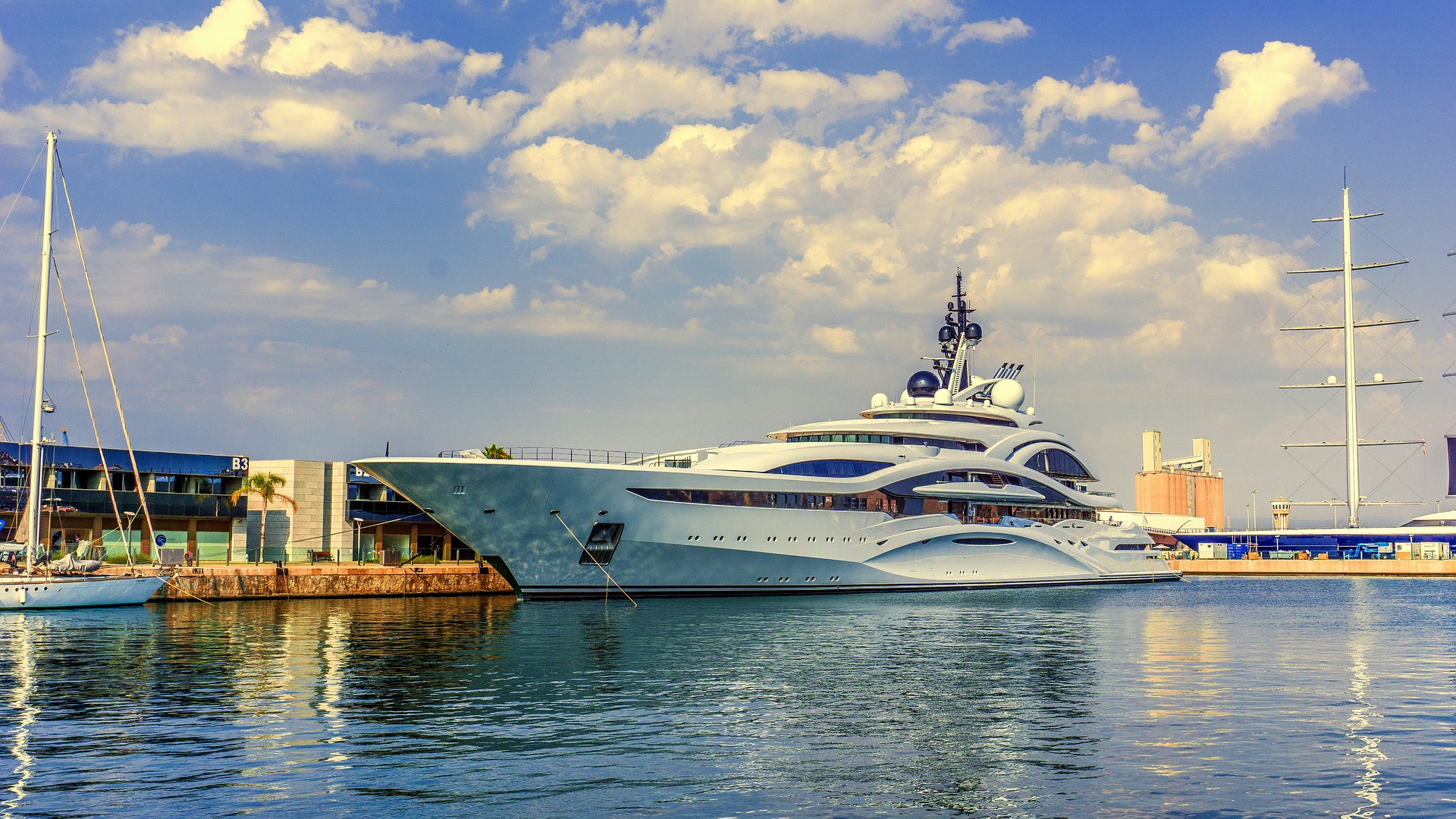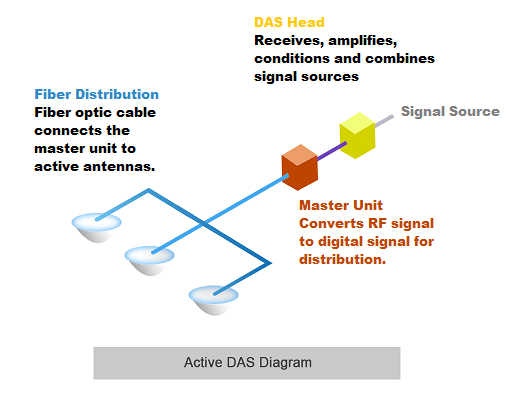
What is an Active DAS?
Active Distributed Antenna Systems (DAS) have emerged as a preferred solution for yacht owners seeking reliable mobile connectivity and UHF radio signal support on board using the same infrastructure. An Active DAS for yachts is a sophisticated network of antennas and boosters designed to amplify and distribute cellular signals and UHF radio frequencies throughout the vessel using fibre optic cables. By strategically placing antennas and amplifiers, Active DAS systems ensure uninterrupted mobile connectivity and enhanced UHF radio reception, even in remote locations or at sea. Whilst at sea the active antenna system can connect directly to a Pico Cell to provide cellular signals to all devices onboard in the middle of the ocean.

Advantages
- Seamless Connectivity: Active DAS can ensure uninterrupted mobile connectivity and UHF radio reception throughout the yacht, regardless of location or network provider. It allows yacht owners and guests to stay connected with reliable signal strength, even in remote or challenging areas.
- UHF Radio Support: Active DAS systems not only provide cellular connectivity but also support UHF radio signals. This enables efficient and reliable communication onboard.
- Built for the future: as technology evolves a well planned Active DAS allows for small changes at the signal source rather than new cabling & antennas across the vessel
- Enhanced Yachting Experience: With reliable mobile connectivity and UHF radio support, yacht owners and guests can enjoy a seamless and immersive yachting experience. They can stay connected with family, friends, and business networks, access real-time information, and make important calls or updates as needed. Overall improving guest experience and crew quality of life.
Disadvantages
- Cost: Implementing an Active DAS system can involve significant upfront costs, including the installation of antennas, amplifiers, and associated equipment. The expenses may vary depending on the size of the yacht.
- Network Dependence: While Active DAS systems improve connectivity and signal strength, they are still reliant on cellular network availability when close to shore. Where network coverage may be limited or absent, the system's effectiveness may be reduced.
- System Complexity: Active DAS systems involve intricate technology and require professional installation and configuration.
Summary
Active Distributed Antenna Systems (DAS) for yachts offer several advantages that enhance connectivity and communication capabilities on board. These include seamless connectivity, increased coverage, improved signal strength, flexibility, compatibility with multiple networks, support for UHF radio signals, customization, scalability, and an enhanced yachting experience.
However, there are some potential disadvantages to consider. These include higher upfront costs, space and installation requirements, and reliance on external land based cellular networks.
Despite these disadvantages, Active DAS systems remain a valuable investment for yacht owners due to their ability to provide uninterrupted connectivity, improved signal quality, and support for UHF radio communication. They enhance safety, convenience, and enjoyment on board by ensuring reliable communication with crew & guests, facilitating real-time information access, and keeping yacht owners, guests and crew connected with family, friends, and business networks.
The decision to implement an Active DAS system should involve careful consideration of the specific needs and budget of the yacht owner, as well as the operational requirements and the potential long-term benefits the system can provide. Speak with the experts at OLAS Communications.
 OLAS Communications (15th May 23)
OLAS Communications (15th May 23)